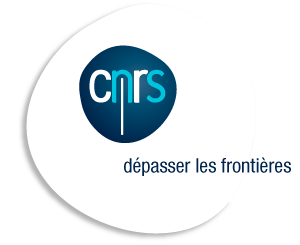The MoMARSAT2019 cruise on the N/O Pourquoi pas? using the HOV Nautile is the yearly maintenance cruise of the EMSO Azores deep-sea observatory on the Lucky Strike hydrothermal vent field and will take place from 10 June to 4 July 2019.
The EMSO-Azores Deep sea observatory
Hydrothermal circulation at mid-ocean ridges is a fundamental process that impacts the transfer of energy and matter from the interior of the Earth to the crust, hydrosphere and biosphere. The unique faunal communities that develop near these vents are sustained by chemosynthetic microorganisms that use the hot fluid chemicals as a source of energy. Environmental instability resulting from active mid-ocean ridge processes create changes in the flux, composition and temperature of emitted hydrothermal fluids and influence the hydrothermal communities.
The MoMAR (Monitoring the Mid-Atlantic Ridge) project was initiated 20 years ago by the InterRidge Program to promote and coordinate long-term multidisciplinary monitoring of hydrothermal vents at MAR. It aims at studying vent environmental dynamics from geophysics to microbiology.
The EMSO-Azores observatory at Lucky Strike has first been deployed in 2010. It is primarily directed at understanding a mid-ocean ridge black smoker’s hydrothermal system, from the magma chamber that supplies the heat, to the microhabitats that host the hydrothermal fauna, and to the hydrothermal plume in the water column. The maintenance procedure is performed every year and requires the use of a Remotely Operated Vehicle. It includes recovery of seafloor instruments and moorings, full onboard checkup and repairs of each component, and redeployment. In addition, we perform yearly sampling of fluids and fauna, and capture videos of vents and habitats that provide critical background to instrumental time-series data. The Lucky Strike hydrothermal field is located in the center of one of the most volcanically active segment of the MAR. This monitoring offers a high probability of capturing evidence for volcanic events, observing interactions between faulting, magmatism; hydrothermal circulations and, evaluating their impacts on the ecosystem.
The Momarsat cruise concerns the yearly maintenance of the EMSO-Azores observatory at Lucky Strike (Mid-Atlantic Ridge). In its actual configuration after the 2018 maintenance cruise, The observatory infrastructure is composed of two Sea Monitoring Nodes (SEAMON) acoustically linked to a surface relay buoy (BOREL), ensuring satellite communication to the land base station in Brest.
The first node dedicated to large scale geophysical studies is moored in the center of the fossil lava lake characteristic of the Lucky Strike vent field. This node hosts an Ocean Bottom Seismometer (OBS) and a permanent pressure gauge (JPP). The second node is deployed at the base of the Tour Eiffel active edifice to study the links between faunal dynamics and physico-chemical factors. This node is composed of a HD video camera, 4 LED lights, 2 Aanderaa optodes, a Wetlab turbidimeter, an in situ chemical analyser. The observatory infrastructure was enriched in 2016 with a Chlorinity sensor (BARS) deployed in the Aisics hot vent, and 4 Ocean Bottom Hydrophones (Hydroctopus) forming an array with 70 m aperture.
Scientific and technical data (including snapshots) are transmitted 4 times a day to the Data Centre in Brest (scientific and technical data). Data are available online - http:// http://www.emso-fr.org/fr/EMSO-Azores according to European directives.
Sketch of the MoMAR infrastructur:

The MoMARSAT experimental design also includes autonomous instruments such as 4 OBS, an oceanographic mooring, autonomous currentmeters and a temperature probe array. Site studies including video surveys, sampling (rocks, water and organisms), and colonization/perturbation experiments are also performed during the cruises.
This year, a specific acquisition program will be dedicated to the study of the water column combining CTD moorings and operation of a VMP (Vertical microprofiler) to describe the microturbulence of the water column.
Part of the sampling project will be done within the EU Merces project (WP4 leaded by Telmo Morato –IMAR- Pt and Andrew Sweetman –HWU-UK) and ECOREF project (PI M. Matabos, Funding by Equinor). The specific objective is to evaluate the resilience of vent mussel assemblages, and the role of large predators on re-colonization processes on the Mid-Atlantic Ridge. We will assess the rate and success of unassisted restoration of active hydrothermal vent communities after significant disturbances using a 3 year in situ experiment. The impacted area covers 1 m² of the 70 m² of mussel bed on the Montségur site.
A specific sampling program will be focused on the crab Segonzacia mesatlantica and the shrimps Mirocaris fortunata. The specimens will be maintained alive in specific aquaria and will be provided to Oceanopolis in Brest for the “Abyss box” exhibition, done in collaboration between Oceanopolis, Univ. Paris Sorbonne (UPMC) and Ifremer, and involving IMAR DOP since 2012.
The team involves personnel from Ifremer, CNRS-INSU laboratories, and IMAR DOP.
The study area belongs to the Portuguese ZEE and is included in an OSPAR Marine Protected Area.
The cruise also contributes to the following projects:
EMSO ERIC (European Multidisciplinary Seafloor and water column Observatory, www.emso-eu.org/, DG J. Danobeitia) and EMSO link (PI P. Favalli, H2020 Grant agreement No. 731036)
MERCES (Marine Ecosystem Restoration in Changing European Seas, www.merces-project.eu/, Coordinator Roberto Danovaro Università Politecnica delle Marche, Italy, H2020 grant agreement No 689518)
ECOREF (PI M. Matabos, Funding from EQUINOR).
iAtlantic (Integrated assessment of Atlantic marine ecosystems in space & time- PI M. Roberts, UK, H2020 Grant Agreement 818123)




